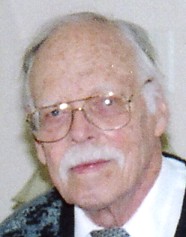Tuesday, November 04, 2008
Probability, Radioactive Decay, and Metaphysics
As a physics student I learned a long time ago the simple probability and mathematics of radioactive decay. If one has a large number N of radioactive atoms (nuclides) of half-life T, then during the first time interval T one-half of the atoms will decay. During the next interval T, half of those left will decay. And so on and on. The number N is so large that it is impractical to conduct an experiment to determine what happens when N gets to be as small as, say 10. Do exactly 5 of those 10 then decay during T seconds? During the next T seconds is the number that decay 2 1/2? Perhaps 2 or 3? And so on. Eventually there is only one left. Does it then decay during the next T seconds? If we had started with a larger number N it seems that the group of atoms would have lived longer. The last atom to decay would be older than the last atom from the first batch N.
These conjectures are not supported by the simple probability theory of radioactive decay. In fact, probability theory doesn't seem to apply unless the number N is very, very large. What theory or mathematical model applies to the case of a small number of radioactive atoms? Is it possible that the mere presence of other unstable atoms (nuclei) has an effect on the probability that a given atom (nucleus) will decay? If so, would the decay rate be different if the material is in the form of a gas, with a large distance between atoms, from what it is if the material is in compact, solid form. Would crystal structure have an effect?
As far as I know, no one has ever measured the effect, if there is one, of material density on the rate of radioactive decay. Also, I don't know of any studies on the effect of the initial number N of radioactive nuclides on the rate of decay in the limit of small N.
I recall a remark another student once made about probability, especially very, very small values of probability. Let us consider another situation: according to existing probability theory, there is a finite but very small probability that all N atoms will decay at once. For N = 1, the probability is 1. For N = 2, the probability that both atoms will decay during the same time interval T is less than 1 but still finite. As N increases, the probability of all N atoms decaying during the same time interval T becomes very small. For N = 100 the probability is so small that we can neglect the possibility of ever observing such an event during our lifetime. The student made the remark that in such a circumstance, the mathematical model we know is an approximation and the probability of such an event is actually zero, not some small number like a decimal point followed by a hundred zeroes and then a one.
These are just random musings of a retired physicist who's tired of musing about the election.
These conjectures are not supported by the simple probability theory of radioactive decay. In fact, probability theory doesn't seem to apply unless the number N is very, very large. What theory or mathematical model applies to the case of a small number of radioactive atoms? Is it possible that the mere presence of other unstable atoms (nuclei) has an effect on the probability that a given atom (nucleus) will decay? If so, would the decay rate be different if the material is in the form of a gas, with a large distance between atoms, from what it is if the material is in compact, solid form. Would crystal structure have an effect?
As far as I know, no one has ever measured the effect, if there is one, of material density on the rate of radioactive decay. Also, I don't know of any studies on the effect of the initial number N of radioactive nuclides on the rate of decay in the limit of small N.
I recall a remark another student once made about probability, especially very, very small values of probability. Let us consider another situation: according to existing probability theory, there is a finite but very small probability that all N atoms will decay at once. For N = 1, the probability is 1. For N = 2, the probability that both atoms will decay during the same time interval T is less than 1 but still finite. As N increases, the probability of all N atoms decaying during the same time interval T becomes very small. For N = 100 the probability is so small that we can neglect the possibility of ever observing such an event during our lifetime. The student made the remark that in such a circumstance, the mathematical model we know is an approximation and the probability of such an event is actually zero, not some small number like a decimal point followed by a hundred zeroes and then a one.
These are just random musings of a retired physicist who's tired of musing about the election.
